Pedestrian 30: The View From New Jersey
Walking the most densely populated cities in the United States.
Manhattan looks best from across the Hudson River. The New Jersey side. Especially from Grundy Park in Jersey City. Standing on the pier, my eyes follow the panorama from right to left: the Verrazzano Bridge, 1 World Trade, the Empire State Building, Hudson yards—Hello?
A pair of tourists motion for a picture with their hands. Will you take our picture? Smiling, they pass me an iPhone. They agree. This is the best view they’ve ever seen. The exchange is sweet, but momentarily awkward. My own desire for perfection gets in the way. I ask to move their jackets lying on the bench. I can see them in the corner of my viewfinder—how distracting—but the tourists don’t care. A picture is a picture. Ok, hold steady. One, two, three.
I’m Alex Wolfe and this is Pedestrian, a newsletter on the observations, feelings, people and experience of walking through the built environment
It’s Martin Luther King, Jr. Day and the sky is as blue as a robin’s egg. I’m walking around Jersey City with hopes of reaching Union City and taking the ferry in Weehawken back to Midtown, Manhattan later this evening. All three municipalities are located in Hudson County, New Jersey, the smallest and most densely populated county in the state. Given the county’s proximity to Manhattan, overly zealous real estate developers occasionally describe the area as the ‘sixth borough’, but to do so would only be a farce. Hudson County is really a thing of its own.
Jersey City attracts me for several reasons. One being genuine curiosity. I passed through the city during an eighteen mile walk from North Bergen to Newark almost two years ago. The distance didn’t allow time for meandering, especially if I wanted to finish before sundown. I didn’t intend to wait so long to return—especially since getting to New Jersey is so easy. My commute between the World Trade Center and Exchange Place this morning was only five minutes on the PATH train. Better late than never.
The other reason, to unwind preconceived notions of New Jersey. Chalk it up to being from Iowa, but I’ll forever champion those misunderstood places so easily overlooked or cast as undesirable. New Jersey fits that bill. I like to be surprised. Walking is a way to access our own truth. Each time I walk, I almost always find the redeeming qualities of my surroundings and if I don’t like a place, at least I form an opinion with my feet on the ground.
I’m so happy I don’t have to walk to Newark today, reminding me my world has since changed. My walks are much shorter now. I have more time and I’m in less of a hurry. Instead of twenty mile (or more) epics, I’m walking ten or twelve. I meander more, get off track, rest, and move slower. I have more attention, not just for my surroundings, but for my own body.
I feel calmer and more comfortable walking in Jersey City. Last time I was here, I walked south down Central Avenue. Today I’m moving north, retracing my steps. Moving in the opposite direction makes everything feel new again. I haven’t thought much about the storefronts, window displays, or signage facing the street in a long time, but I remember everything. Walking has its way of dusting off old memories. I remember eating lunch in the park across from Rizzo’s Bakery, the old firehouse, and the mural of Jesus in the church parking lot.
My thoughts are interrupted by an alarm ringing in the distance. By the time I register the sound, I realize the alarm has been going off for a long time—I just wasn’t paying attention. The experience is akin to hearing your alarm clock go off in your dreams. You hear the sound the entire time, but only comes into consciousness the moment you wake up.
Two fire engines park outside a six story apartment building. The alarm comes from inside. I can hear the sirens of another truck barreling down the street. Once arriving, the operator parks diagonally, blocking traffic, and a company of firefighters spill from the truck doors. I can’t see a fire anywhere. A resident hangs her head out the window, just as confused as I am. The firefighters walk through the front door with little concern. Nothing to worry about here. A routine visit.
Geographically, Jersey City (and the surrounding area) isn’t flat—like much of Hudson County. Most development east of the Hackensack River—where I am walking—is built on a cuesta. North Bergen, just a few miles north of Jersey City, is home to the second most hills per square mile in the country, right behind San Francisco. I’m on high ground. The gaps between buildings offer a glimpse of distant, expansive wetlands covered in salt hay the color of a lion’s mane—the New Jersey Meadowlands.
The Meadowlands have a complicated history, one I’ve just started to uncover. Four hundred years ago, the land was a vibrant ecosystem full of Atlantic white Cedar with nearby Hackensack River as its lifeblood. Early Dutch settlers drained the nearby land with dikes and cut down the trees to make way for farms of salt hay. Towns and industrial developments soon followed.
The land suffered horribly in the 20th Century becoming a free-for-all dumping zone and one of the largest landfills in the world. Two-thirds of the wetlands were filled as a result. The stench was unbearable and the Hackensack River was highly contaminated, driving out critical wildlife, leaving only the heartiest of species like the mummichog fish. The opening of the New Jersey Turnpike in January 1952 only amplified the continuing environmental decline of the Meadowlands. Conservation efforts began in the seventies, although the land remains highly polluted with civilian and military waste, not to mention high concentrations of Mercury.
The view is undeniably jarring. 8,400 acres of undeveloped land just a stone's throw from Midtown, Manhattan. All I want is a picture. I forget my determined path in favor of finding a suitable vantage point, leading me to Paterson Plank Road.
I always find a way to walk along some of the most unfriendly roads for pedestrians, no matter the location. If the roads exist, I will find them. Paterson Plank is no exception, boasting a constant stream of moderately fast moving traffic and a carelessly placed sidewalk hugging the shoulder of the road. To my left is a chain link fence and thick brush. To my right, a steep hill peppered with housing developments. Not ideal. I’ve no choice but to move forward as I’ve walked too far. Turning around in search of a better road would take just as much time to reach the next intersection.
I continue for about half a mile, stopping once I reach a playground beside a parking lot. The grounds are privately owned and only accessible by residents of a nearby housing development called the Hudson Mews. This does not stop me from walking through the chain link gate and climbing the fence to get a proper view of the Meadowlands. Children and their parents play on the equipment behind me, but my presence is not of concern. I take my time, trying to find the right shot, realizing I’d have to find even higher ground for the picture I imagined. My viewfinder can only capture a sliver of the landscape.
I capture the picture, take a right at the next intersection, and follow a street parallel to Route 495. The sidewalk is void of people given the concentration of fast moving traffic. The area is filled with old hotels and big box stores, but the landscape shifts quickly as I move. In a matter of two or three blocks, I reach Bergenline Avenue, the main thoroughfare of Union City—the second most densely populated city in the United States— and longest commercial avenue in the entire state. The shift is palpable, an experience most intimately felt on foot.
Once a predominantly Irish, Italian and Eastern European enclave up until the mid 20th century, Union City has become a haven for Latin American immigrants, most notably Cubans. Gentrification has yet to homogenize this city. Big box stores and retail chains are few and far between. Instead, the streets are lined with small business, mom and pop restaurants, botanicas, and clothing stores.
I could spend an entire day walking in Union City, but it’s getting dark and pushing me to return to Manhattan. Time to catch the ferry if I’m to get home at a decent hour. The walk to the Weehawken ferry terminal doesn’t take long, but does require climbing down the palisades lining the Hudson River via a tall set of stairs. As I descend, I see another panoramic view of Manhattan—better than the view I saw this afternoon with the tourists. The glass surface of the buildings glows orange from the setting sun. The sun retreats by the time I reach the end of the staircase and I am greeted by nightfall.
At the terminal, I purchase my ticket from the counter and take a seat at the bar and wait for the next arrival. I’m pleasantly surprised. For a ferry terminal, the ambiance is soothing. Through the window glass, I see the lights of Midtown standing across the Hudson River. I continue inspecting the bar. Dim lights, neon signs, and fish tanks. Muted monitors play sports TV. There’s a Japanese restaurant in the back. Patrons line the bar table, but keep to themselves—eating sushi—just as they would at an airport terminal. The bar is perfect. Dolly Parton plays, followed by Fleetwood Mac. Noone is here because they want to be. We are passing time waiting to get back home.
I’m hungry after eleven miles of walking. The bartender asks if I’d like a food menu. Instead of catching the next ferry, I order a bento box and miso soup—promptly devoured. An intercom speaker rings shortly after. Now arriving Midtown ferry to west 39th Street. I shuffle into the main deck. The boat speeds through the water and within ten minutes, I’m back in Manhattan looking across the Hudson River. Until next time New Jersey.
Thanks for reading,
Alex
As always, I’m Alex Wolfe and this is Pedestrian. If you enjoyed this newsletter, please consider sharing with a friend.




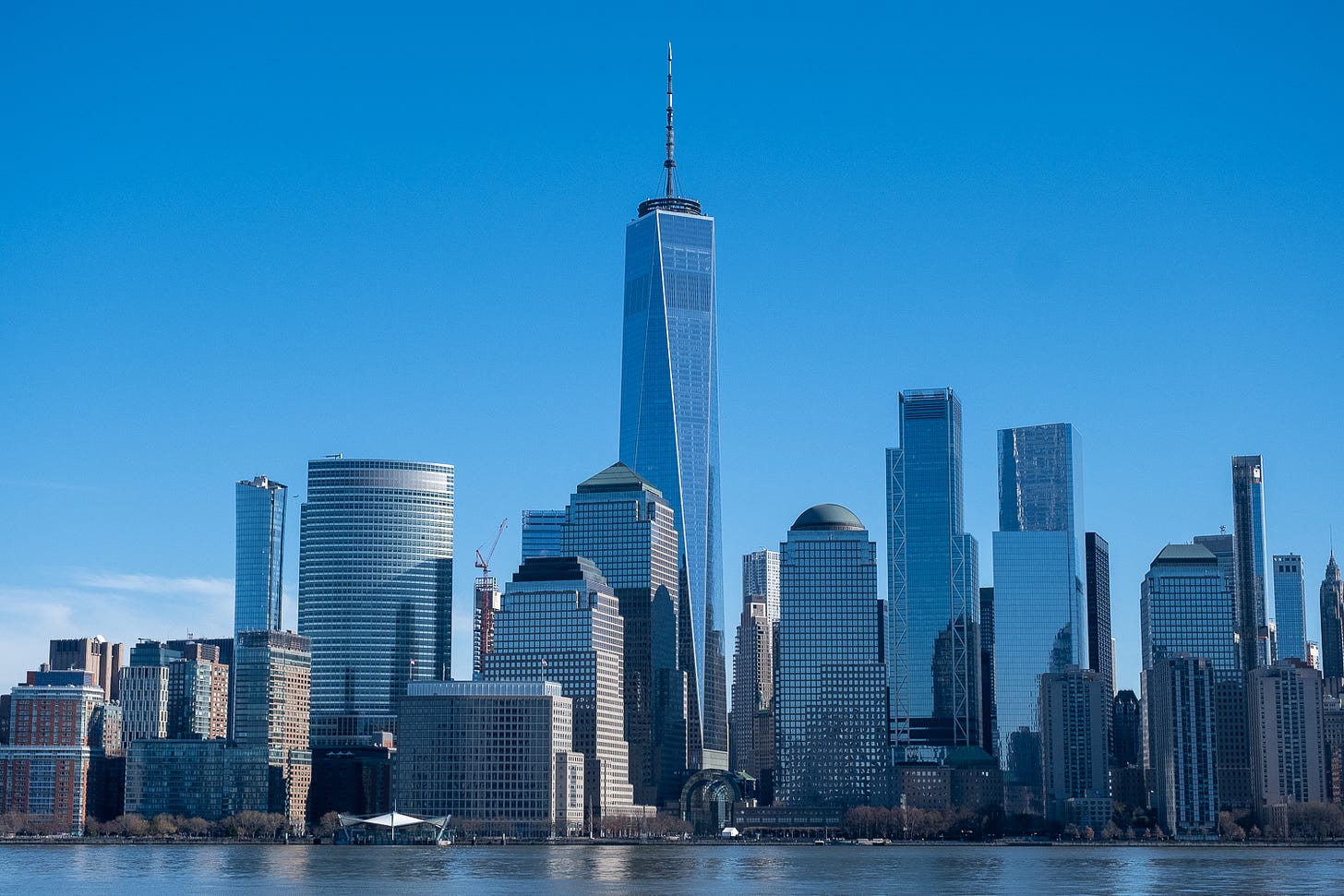
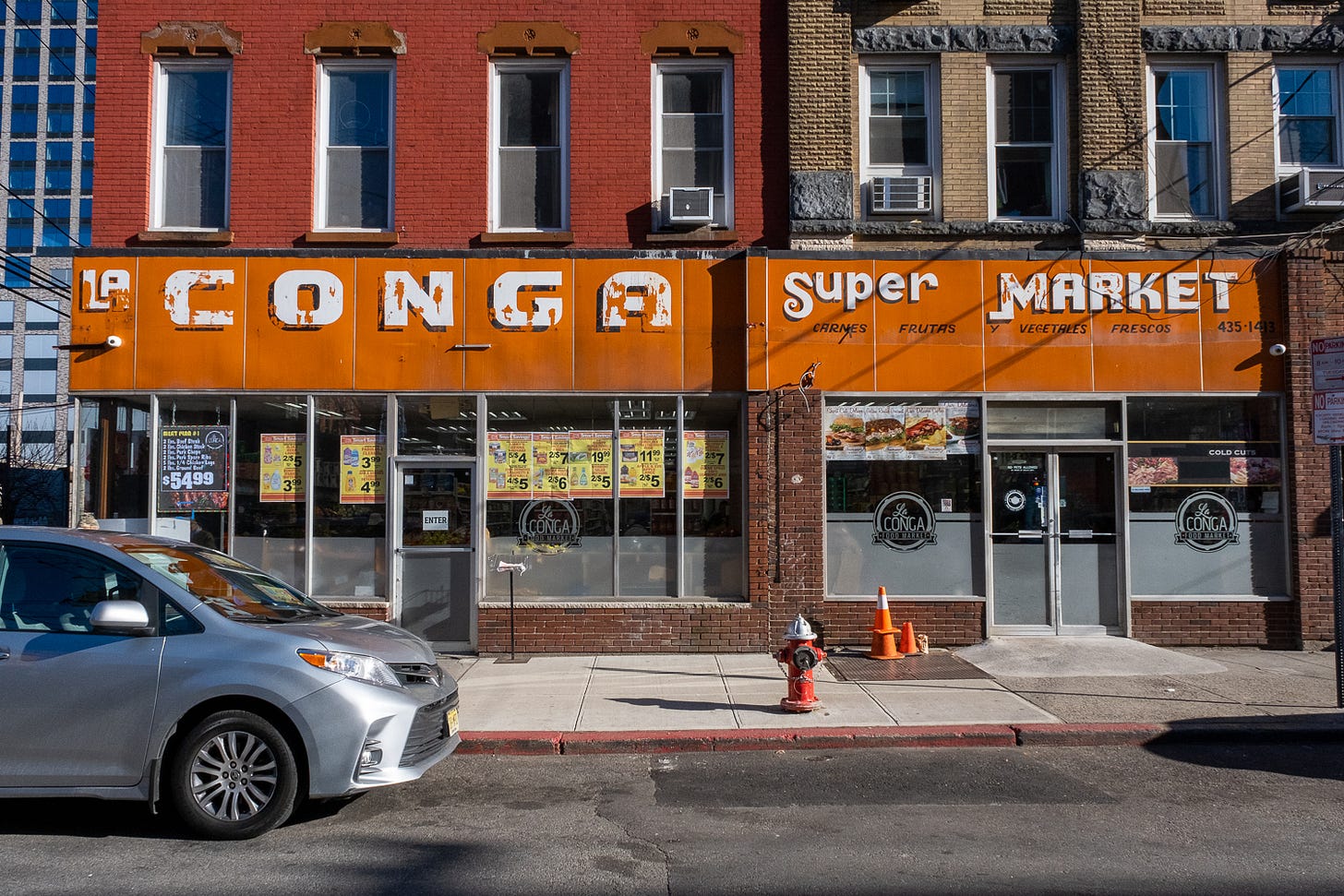
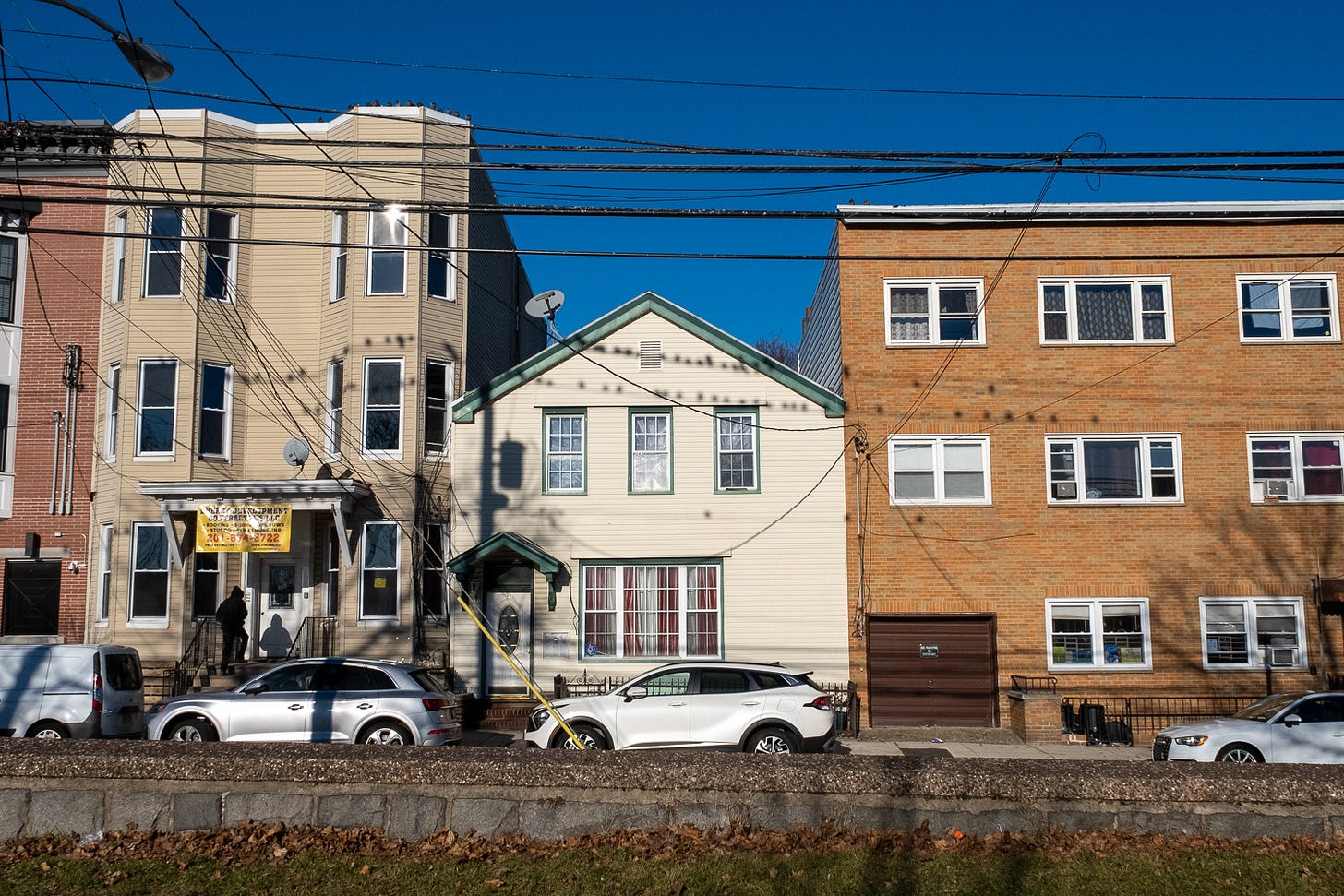
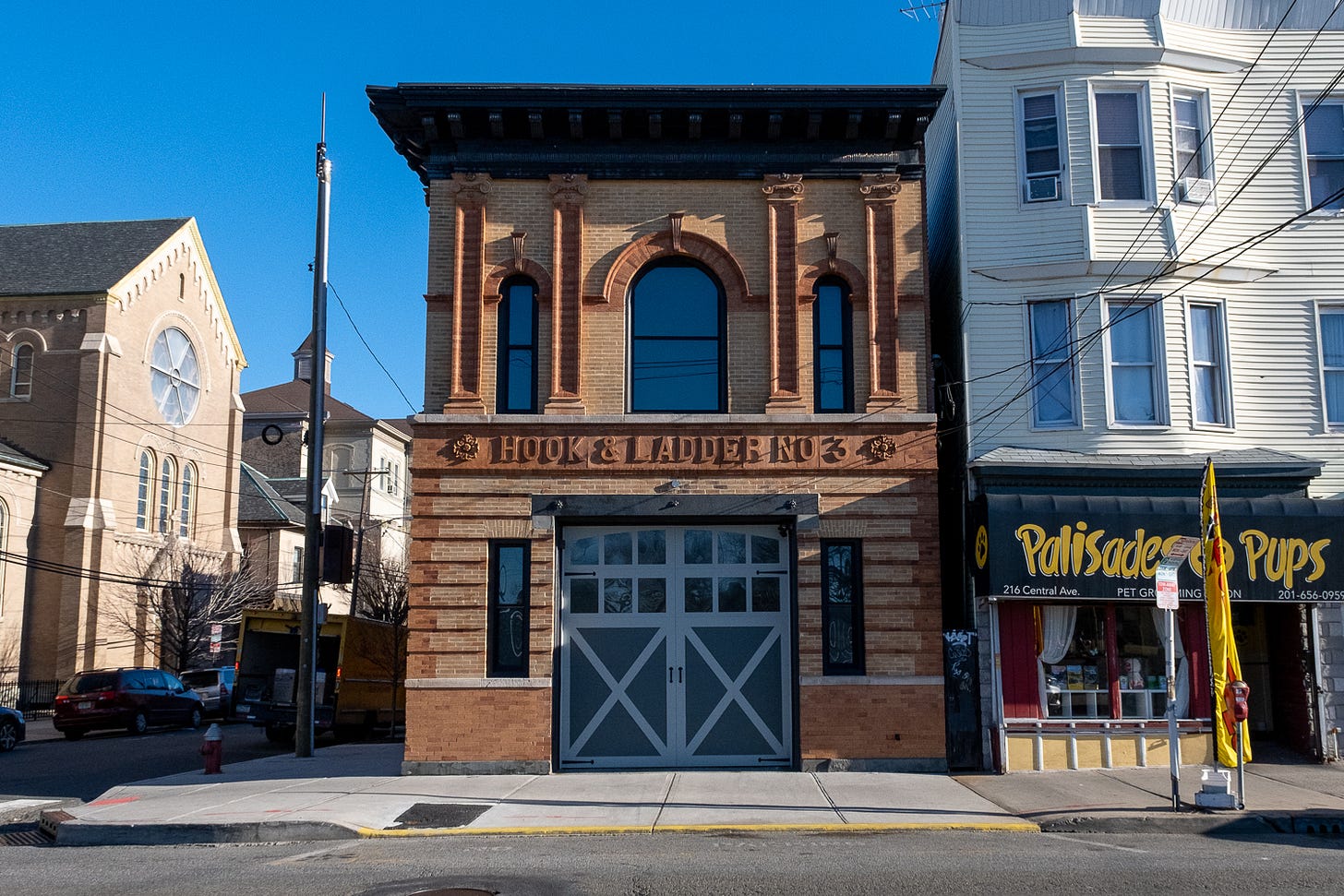
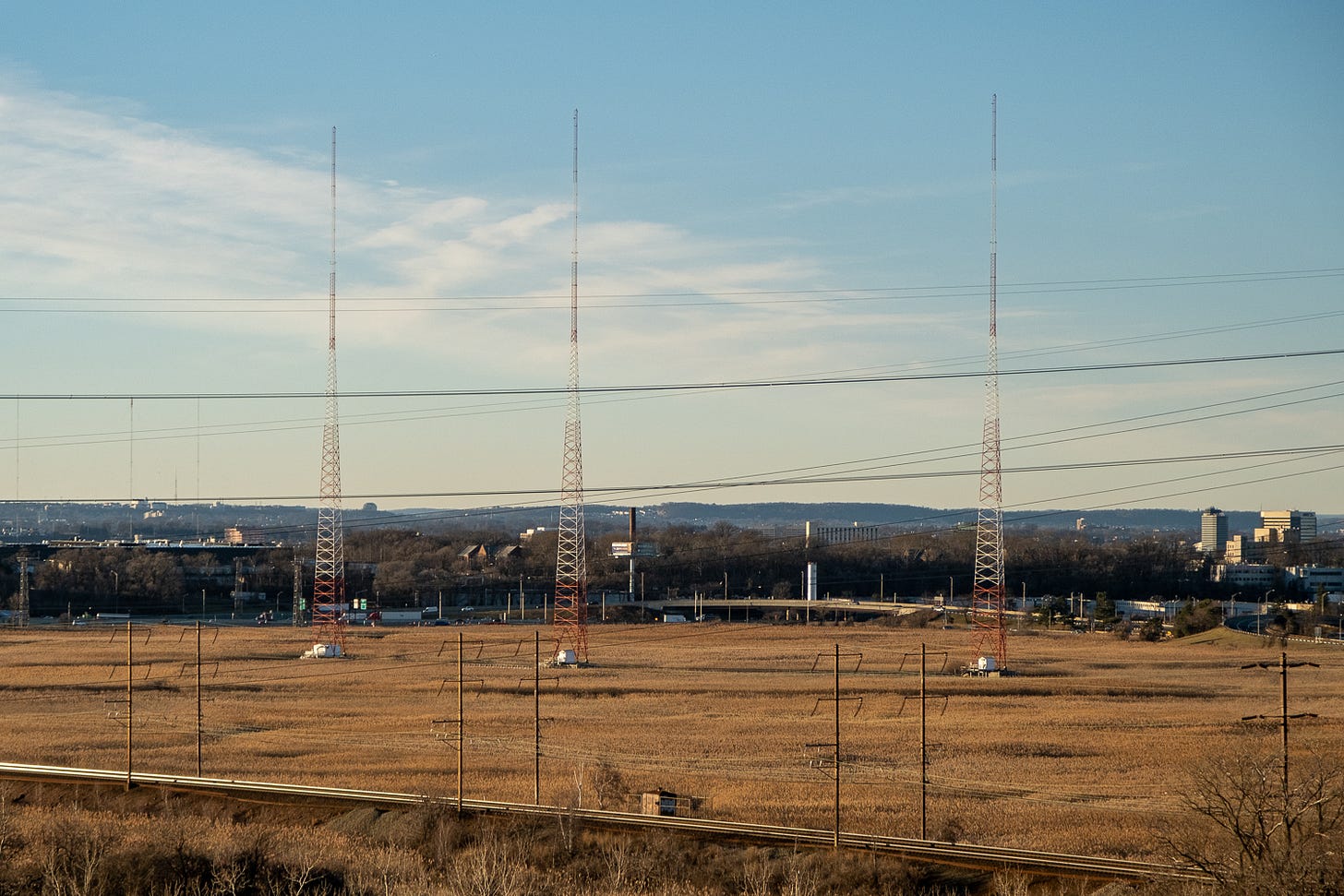
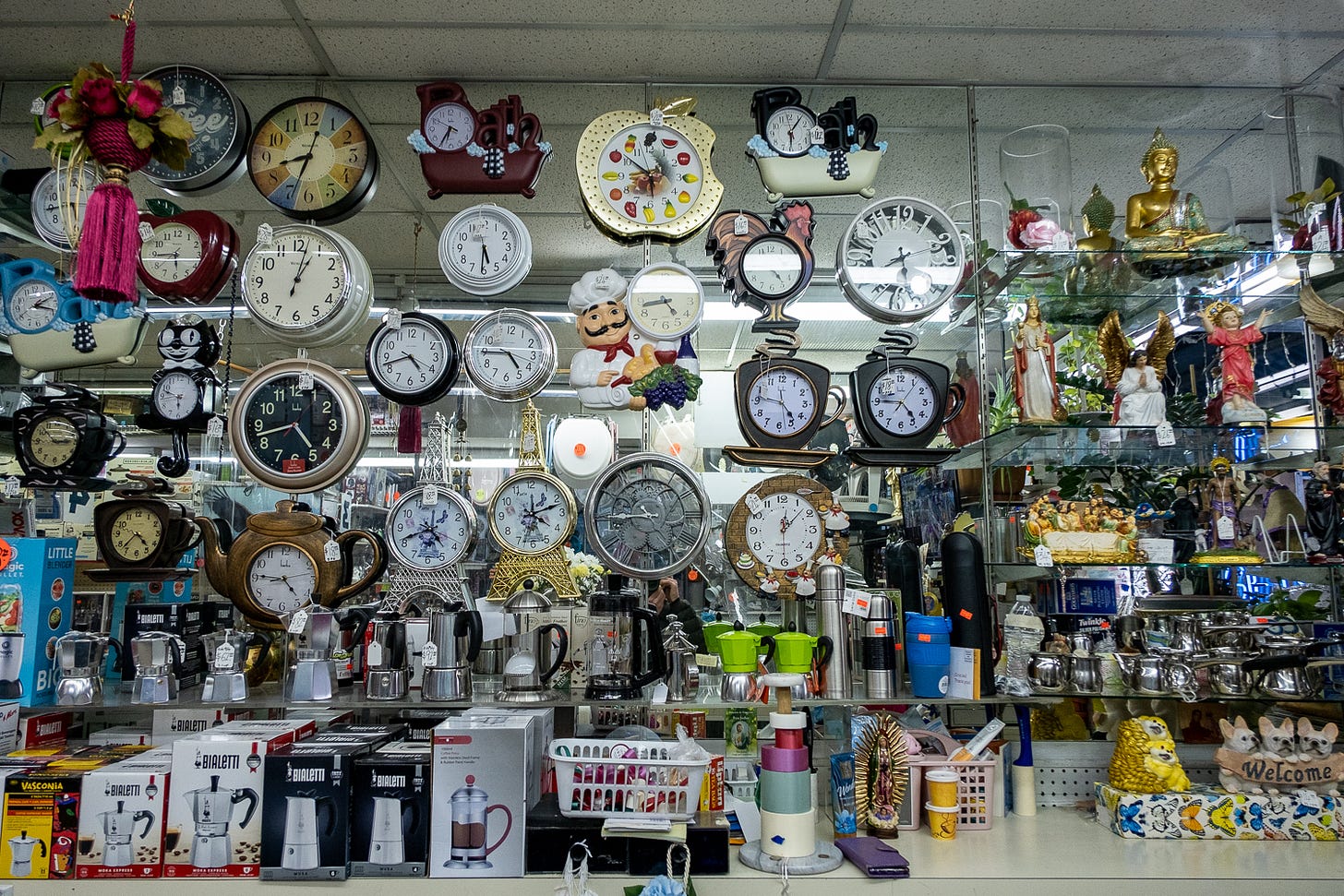
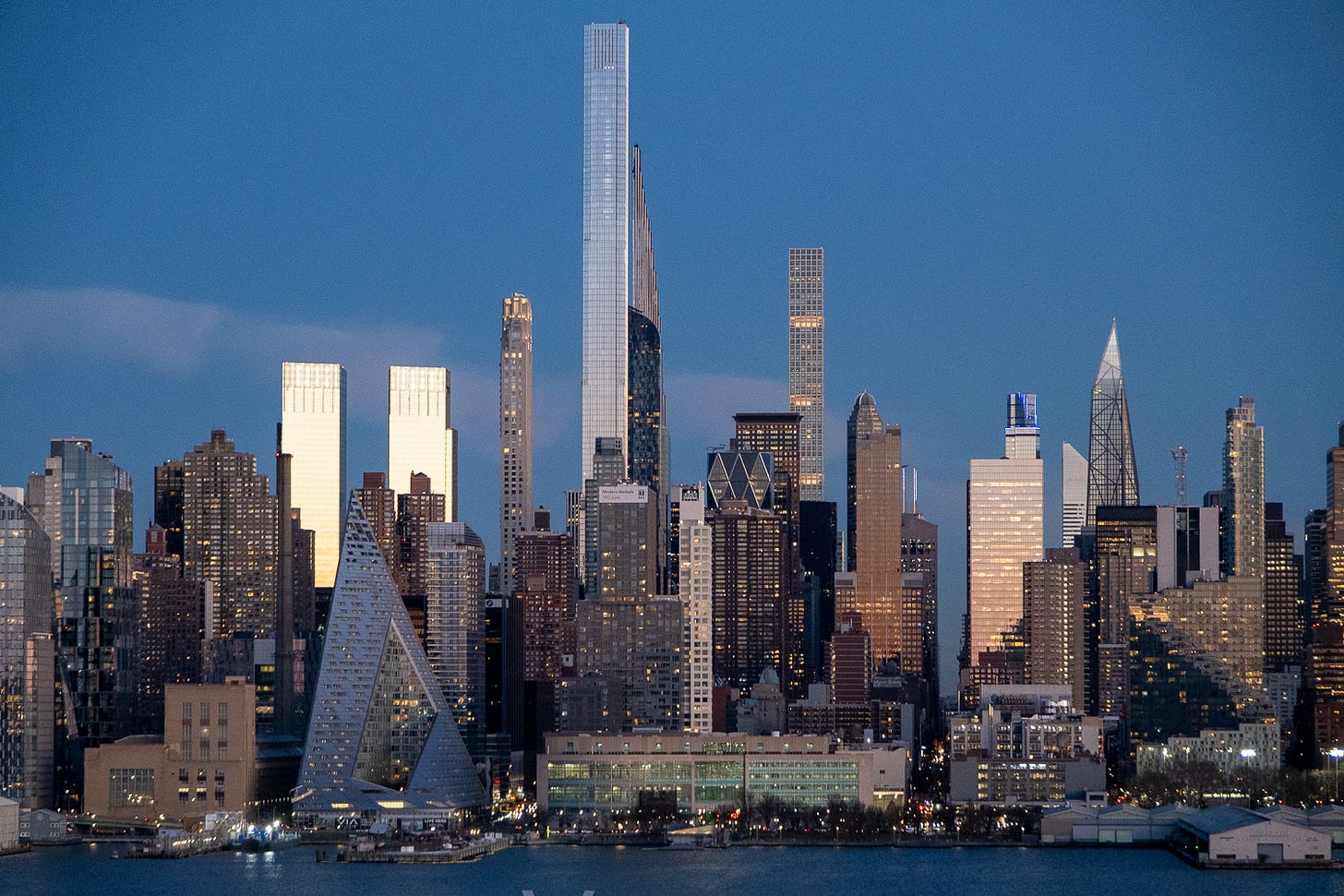
I agree, the Manhattan skyline is best viewed from New Jersey. Hudson County is a really fascinating place because in so many ways it kind of does feel like the 6th borough, and more New York-y than, say, Staten Island, but really NYC is so many things. It's City Island as much as it is Greenwich Village. Hudson County could be New York, and is arguably an extension of it as being part of the metro area, but is also its own thing and both of these realities are what make it special. I think it's a really cool that places like Union City have maintained their place as homes for the newly arrived, too, even though this is less the case for Hoboken or Jersey City.